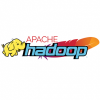Related Content
 |
Exploring Big Data Options in the Apache Hadoop Ecosystem With the emergence of the World Wide Web came the need to manage large, web-scale quantities of data, or “big data.” The most notable tool to manage big data has been Apache Hadoop. Let’s explore some of the open source Apache projects in the Hadoop ecosystem, including what they're used for and how they interact. |
|
 |
Agile Dojo: Speed Up Delivery Using Focus An Agile Dojo is an immersive learning experience where teams bring their work into a collocated space and work together to complete a project, using “hyper-iterations” of two-day sprints, over six weeks. Even distributed teams are able to collaborate, focus, and deliver projects on time and within budget. Here's how. |
|
 |
Effectively Measuring Agile Leadership Culture drives performance, and agile leaders set a team's culture, so leaders should be measured at how effectively they’re doing just that. The challenge is, what might that look like? Here’s an idea for a four-quadrant measurement approach for leaders' organizational and personal effectiveness in agile contexts. |
|
 |
Transforming a Team of Agile Skeptics into Agilists Coaching an agile-skeptical team demands a personalized approach. Agile introduces a different way of working and thinking, and leaders must find a way to overcome resistance and foster a collaborative culture. Take these three steps to move toward achieving an agile mindset and realizing the benefits of agile. |
|
 |
Are Your Fundamentals Malfunctioning? Every objective has certain elements that are fundamental to its success. These include the supporting tasks or systems that we take for granted but without which our “real” work could not get done. In order for any organization or team to meet its primary objectives, these fundamentals need to be functioning properly. |
|
 |
Maximizing Agile by Understanding Learning Styles To be most agile with your communication, understand several models of learning styles, where you fit into them, and where your team fits into them. By tweaking the ways you communicate to fit the information and the situation, you are helping your team remain agile by valuing people and interactions over processes. |
|
 |
Deception and Estimation: How We Fool Ourselves Research suggests that humans are biased, not-very-rational decision-makers. We believe we see things clearly when the evidence shows otherwise. Throw in a big dose of optimism, and it's easy to see how estimating software projects can be problematic. Our best hope is to construct diverse groups with varied viewpoints. |
|
 |
When to Use Different Types of NoSQL Databases Web-scale data requirements are greater than at a single organization, and data is not always in a structured format. NoSQL databases are a good choice for a larger scale because they're flexible in format, structure, and schema. Let’s explore different kinds of NoSQL databases and when it’s appropriate to use each. |







